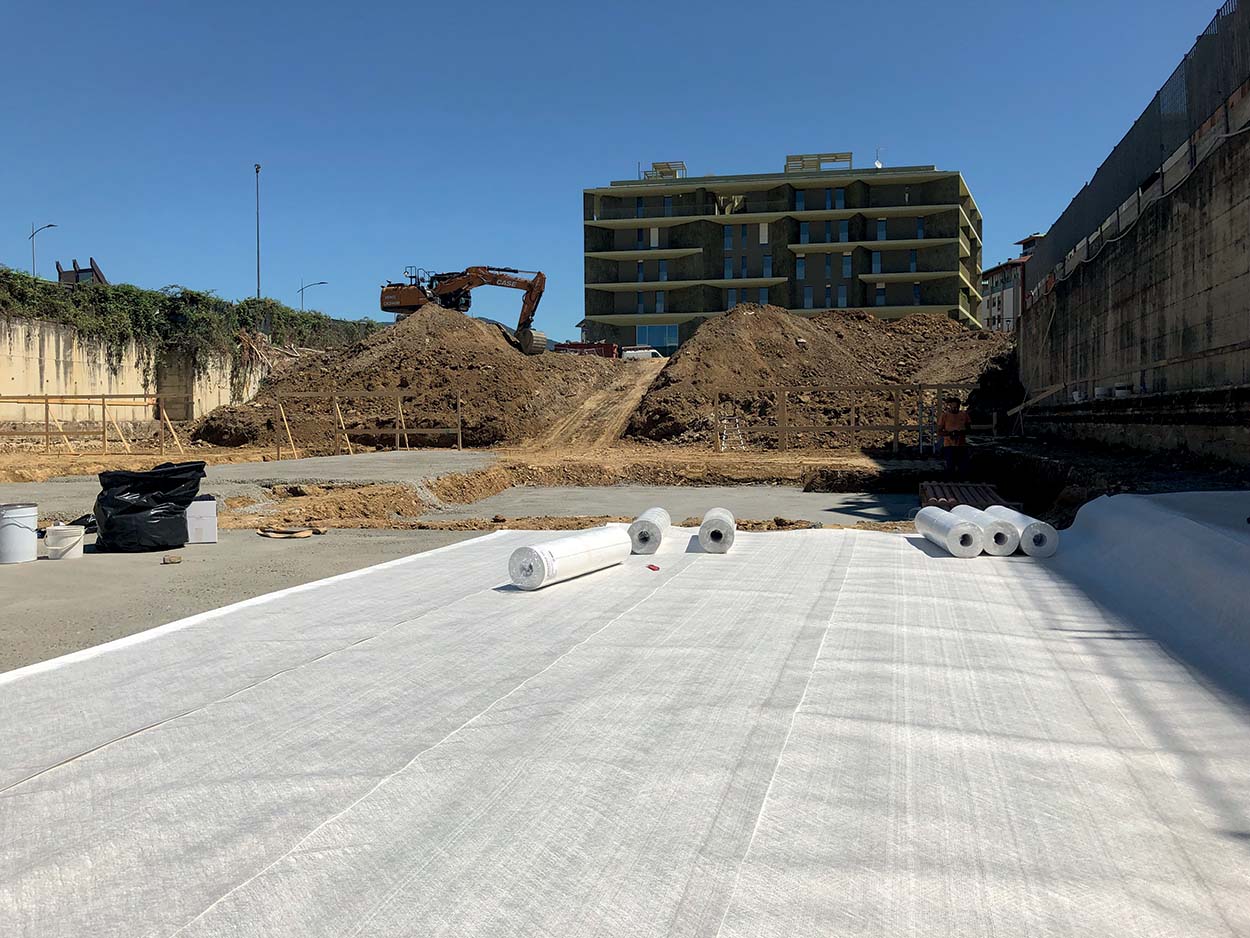-
Singapore
Copyright © 2025 Powered by BCI Media Group Pty Ltd
Confirm Submission
Are you sure want to adding all Products to your Library?
Contact Detail

In March 2019, at the MADE trade fair in Milan, Mapei presented for the first time their fully-bonded waterproofing membrane, MAPEPROOF FBT, which generated a great deal of interest amongst sector operators.
The membrane, consisting of a layer of synthetic FPO firmly sandwiched to a layer of non-woven fabric, was developed to waterproof reinforced concrete foundations. Once concrete has been poured, the membrane adheres monolithically to the concrete and remains bonded over time, impeding lateral migration of water between the foundation structure and the membrane. In so doing, MAPEPROOF FBT forms a highly effective barrier against groundwater, moisture in the ground, radon gas and methane.
And thanks to the waterproofing tapes MAPEPROOF FBT TAPE 600 and MAPEPROOF SA TAPE, Mapei offers a proven waterproofing system that has demonstrated its effectiveness.
Besides being launched in other countries, the membrane was tested on the Swiss market where the Group's subsidiary, Mapei Suisse, introduced MAPEPROOF FBT in 2019 to widespread acclaim. Over the course of the last two years it has been installed on more than 270,000 m2 of surfaces: at the Swiss Life Arena site in Zurich, in the eco-neighbourhood of Marly and in the swimming pool in Appenzell, as well as in entire neighbourhoods, such as the Glasi district in Bülach and the Dietlimoos district in Adliswil. Mapei followed all these projects very closely and provided technical support both when choosing which system to use and when actually installing the system.
We interviewed the engineer Philipp Truffer, owner of the engineering consulting company Truffer Ingenieurberatung AG and member of the Commission on Waterproofing Standards of the Swiss Society of Engineers and Architects (SIA).
Why should you use fully-bonded membranes?
A waterproofing membrane fully-bonded to fresh, poured concrete is thought of as an emergency solution for “white tank” systems. With white tank systems, it is not possible to exclude the possibility of localised leakage in advance, which then need to be waterproofed by injection.
In such cases, you have to be able to reach the elements to be waterproofed, something that isn’t always possible, such as when plant equipment has been installed and it is difficult to remove it. In these situations, using a fully-bonded waterproofing membrane is a valid solution. It is also possible to combine it with a suitable system to waterproof the joints.
What are the advantages of this system compared with other types of membranes?
Being bonded to the concrete impedes lateral migration of water. If the membrane does not adhere to concrete, it is not possible to localise potential leaks. The water would then pass through the waterproofing system and enter into the structure. Another advantage is the fact that, apart from guaranteeing excellent mechanical characteristics, the special polyolefin used to make the membrane has the capacity to bridge any small deformations there may be in the structure of the concrete.
What is your experience of the Mapei systems?
We have always had positive results. We have found this type of waterproofing to be highly effective. However, because the devil is in the detail, you have to be really careful at all times, right down to the minutest part. Mapei supports us during the design phase by helping us determine the specifications for the work to be carried out. Application of the membrane is also important and has to be carried out by specialists who have received training specific for this type of work.
This article was taken from Realtà Mapei Suisse, no. 16, the in-house magazine published by Mapei Suisse/Schweiz.






